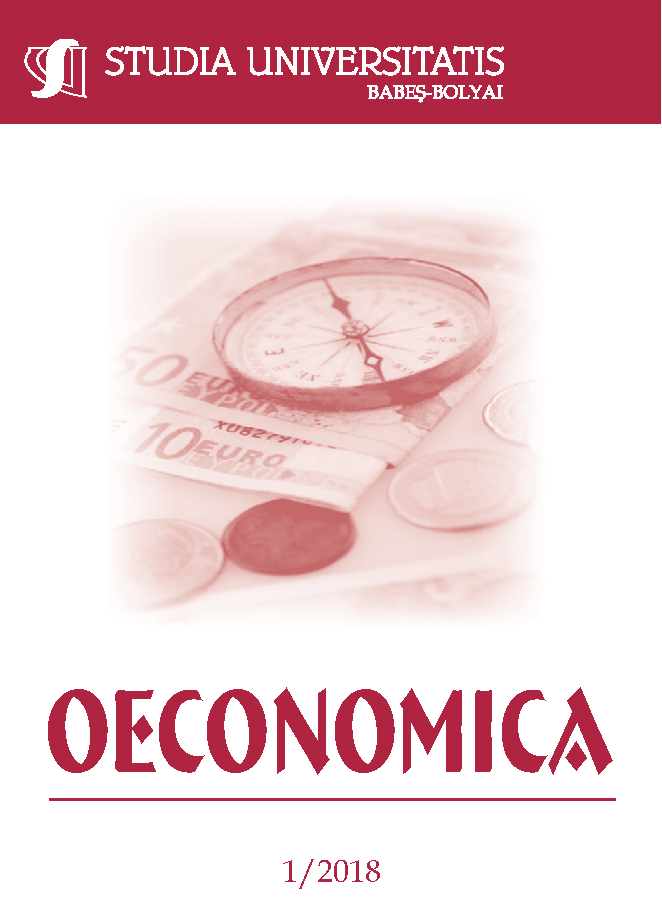FINANCIAL LITERACY AND STOCK PRICE INFORMATIVENESS: A CROSS-COUNTRY STUDY
DOI:
https://doi.org/10.2478/subboec-2018-0004Keywords:
price informativeness, financial literacy, financial knowledge, firm-specific information, private informationAbstract
This paper examines the impact of financial literacy on stock price informativeness in a sample of firms from 20 countries. Using four measures of stock price informativeness, we find a significant relationship between higher financial literacy and higher stock price informativeness. The individual investors’ contribution regarding the incorporation of specific information into stock prices includes private information also and not mere specific information in the general sense. Financial knowledge is the key element that helps individual investors to incorporate specific information into stock prices.
JEL Classification: C13, G14, G15, I22
References
Amihud Y. (2002) Illiquidity and stock returns: cross-section and time- series effects. Journal of Financial Markets, 5, 31–56
Bakke T.E., Whited T.M. (2010) Which firms follow the market? An analysis of corporate investment decisions. Review of Financial Studies, 23(5),1941–80
Barber B., Odean, T. (2000) Trading is hazardous to your wealth, the common stock investment performance of individual investors, Journal of Finance, 55, 773–806
Bond P., Edmans A., Goldstein I. (2012) The Real Effects of Financial Markets, Annual Review of Financial economics, 4, 339-360
Chan K., Hameed A. (2006) Stock Price Synchronicity and Analyst Coverage in Emerging Markets, Journal of Financial Economics, 80, 115–47
Chan K., Chan Y.C. (2014) Price Informativeness and Stock Return Synchronicity: Evidence from the Pricing of Seasoned Equity Offerings, Journal of Financial Economics, 114, 36–53
Chen Q., Goldstein I., Jiang W. (2007) Price informativeness and investment sensitivity to stock price, Review of Financial Studies 20(3), 619–50
Choi J., Laibson D., Madrian B.C. (2011) $100 bills on the sidewalk: suboptimal investment in 401(k) plans, Review of Economic and Statistics, 93(3), 748–763
Christelis D., Jappelli T., Padula M. (2010) Cognitive abilities and portfolio choice, European Economic Review, 54(1), 18–38
Dasgupta S., Gan J., Gao N. (2010) Transparency, Price Informativeness, and Stock Return Synchronicity: Theory and Evidence, Journal of Financial and Quantitative Analysis, 45, 1189–220
Dow J., Gorton G. (1997) Stock Market Efficiency and Economic Efficiency: Is There a Connection?, Journal of Finance, 52, 1087–1129
Durnev A., Morck R., Yeung B. (2004) Value Enhancing Capital Budgeting and Firm-Specific Stock Return Variation, Journal of Finance, 59, 65–10
Eun C.S., Wang L., Xiao S.C. (2015) Culture and R2, Journal of Financial Economics, 115 (2), 283–303
Evans A. (2010) Do individual investors affect share price accuracy? some preliminary evidence. University of Michigan Law School The John M. Olin Center for Law & Economics Working Paper Series
Fernandes N., Ferreira, M.A. (2009) Insider Trading Laws and Stock Price Informativeness, Review of Financial Studies, 22, 601–644
Fressard L. (2012) Cash savings and Stock Price Informativeness, 16(4), 985-1012
Giofre M. (2017) Financial education, investor protection and international portfolio diversification, Journal of International Money and Finance, 71, 111-139
Graham J., Harvey C., Huang H. (2009) Investor competence, trading frequency, and home bias, Management Science, 55(7), 1094–1106
Hastings J.S., Madrian B.C., Skimmyhorn W.L. (2013) Financial Literacy, Financial Education and Economics Outcomes, Annual Review of Economics, 1 (5), 347-373
Hofstede, G., Hofstede, G., Minkov, M., 2010. Cultures and Organizations, Software of the Mind, third ed. McGraw-Hill, New York
Jin L., Myers S. (2006) R2 around theworld, Journal of Financial Economics, 79, 257–292
Kan S., Gong S. (2017) Does High Stock return synchronicity Indicate High or Low Price Informativeness? Evidence from a regulatory experiment, International Review of Finance, https://doi.org/10.1111/irfi.12157
Kaufmann D., Kraay A., Mastruzzi M. (2010) The Worldwide Governance Indicators: A Summary of Methodology, Data and Analytical Issues, World Bank Policy Research Working Paper No. 5430 http://papers.ssrn.com/sol3/papers.cfm?abstract_id=1682130
Kelley E., Tetlock P. (2013) How wise are crowds? insights from retail orders and stock returns, Journal of Finance, 68, 1229–1265
Kumar A. (2009) Who gambles in the stock market? Journal of Finance, 64, 1889–1933
Kyle A.S. (1985) Continuous Auctions and Insider Trading, Econometrica 53, 1315–1336
Li B. (2014) R2 and isiosyncratic Risk Are Not Interchangeable, The Accounting Review, 89(6), 2261-2295
Llorente G., Michaely R., Saar G., Wang J. (2002) Dynamic Volume-Return Relation of Individual Stocks, Review of Financial Studies, 15, 1005–1047
Morck, R., Yeung B., Yu W. (2000) The Information Content of Stock Markets: Why do Emerging Markets have Synchronous Stock Price Movements?, Journal of Financial Economics, 59, 215–260
Odean T. (1998) Are investors reluctant to realize their losses?, Journal of Finance, 53, 1775–1798
Subrahmanyam A., Titman S. (1999) The Going-Public Decision and the Development of Financial Markets, Journal of Finance, 54, 1045–1082
Teoh S.H., Yang Y.G., Zhang Y. (2009) R-Square and Market Efficiency’, SSRN Working Paper. Available at https://ssrn.com/abstract=926948
Van Rooij M., Lusardi A., Alessie R. (2011) Financial literacy and stock market participation. Journal of Financial Economics, 2011, 101(2), 449–472
Wang Q., Zhang J. (2015) Does individual investor trading impact firm valuation?, Journal of Corporate Finance, 35, 120-135
Downloads
Published
How to Cite
Issue
Section
License
Copyright (c) 2018 Studia Universitatis Babeș-Bolyai Oeconomica

This work is licensed under a Creative Commons Attribution-NonCommercial-NoDerivatives 4.0 International License.



